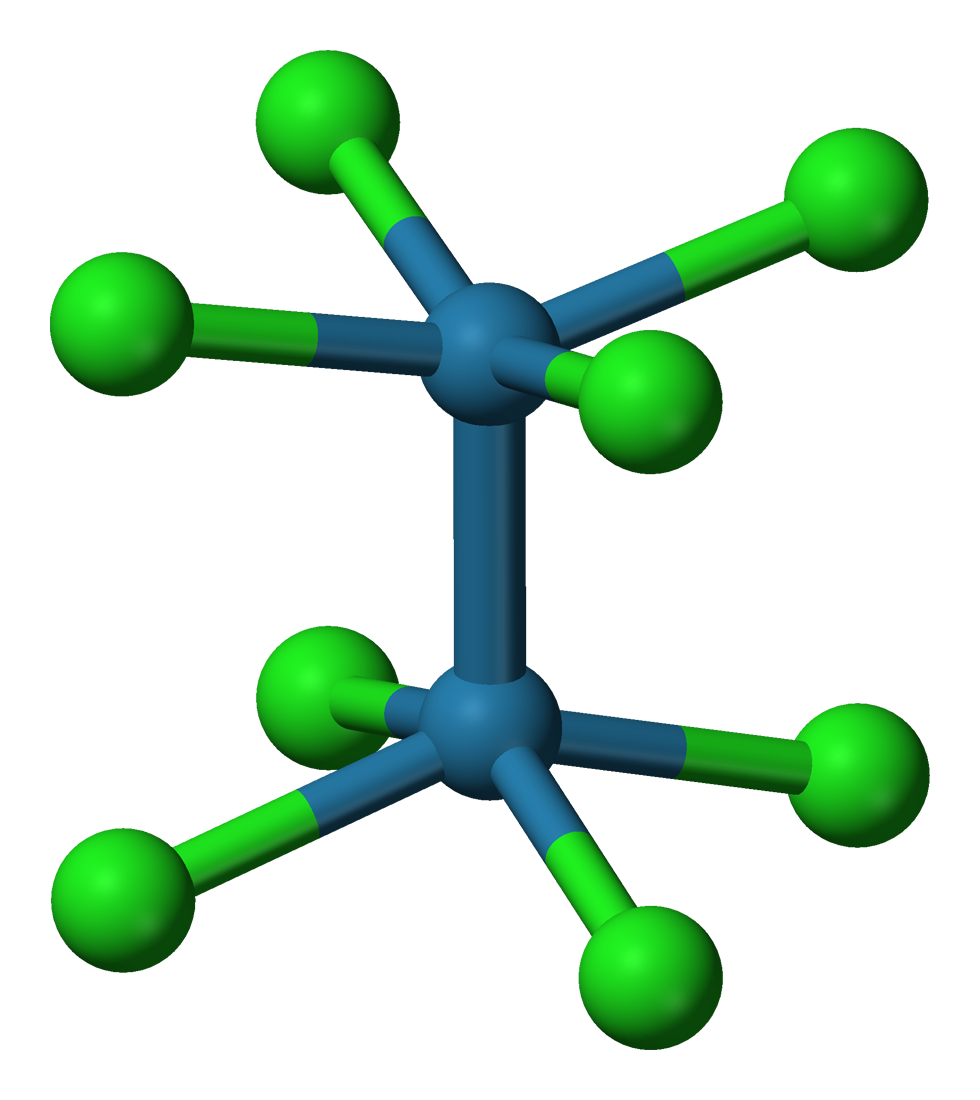Potassium octachlorodimolybdate on:
[Wikipedia]
[Google]
[Amazon]
Potassium octachlorodimolybdate (systematically named potassium bis(tetrachloromolybdate)(''Mo''–''Mo'')(4−)) is an  The compound is prepared in two steps from
The compound is prepared in two steps from
inorganic compound
In chemistry, an inorganic compound is typically a chemical compound that lacks carbon–hydrogen bonds, that is, a compound that is not an organic compound. The study of inorganic compounds is a subfield of chemistry known as '' inorganic chemist ...
with the chemical formula
In chemistry, a chemical formula is a way of presenting information about the chemical proportions of atoms that constitute a particular chemical compound or molecule, using chemical element symbols, numbers, and sometimes also other symbols, ...
. It is known as a red-coloured, microcrystalline solid. The anion is of historic interest as one of the earliest illustrations of a quadruple bond
A quadruple bond is a type of chemical bond between two atoms involving eight electrons. This bond is an extension of the more familiar types double bonds and triple bonds. Stable quadruple bonds are most common among the transition metals in the m ...
ing. The salt is usually obtained as the pink-coloured dihydrate
In chemistry, a hydrate is a substance that contains water or its constituent elements. The chemical state of the water varies widely between different classes of hydrates, some of which were so labeled before their chemical structure was understo ...
.
 The compound is prepared in two steps from
The compound is prepared in two steps from molybdenum hexacarbonyl
Molybdenum hexacarbonyl (also called molybdenum carbonyl) is the chemical compound with the formula Mo(CO)6. This colorless solid, like its chromium and tungsten analogues, is noteworthy as a volatile, air-stable derivative of a metal in its zero ...
:
:
:
The reaction of the acetate with HCl was first described as providing trimolybdenum compounds, but subsequent crystallographic analysis confirmed that the salt contains the anion
An ion () is an atom or molecule with a net electrical charge.
The charge of an electron is considered to be negative by convention and this charge is equal and opposite to the charge of a proton, which is considered to be positive by convent ...
, with D4h symmetry, in which the two Mo atoms are linked by a quadruple bond. Each Mo atom is bounded with four ligands
In coordination chemistry, a ligand is an ion or molecule (functional group) that binds to a central metal atom to form a coordination complex. The bonding with the metal generally involves formal donation of one or more of the ligand's electro ...
by a single bond. Each group is an regular square pyramid, with Mo atom at the apex
The apex is the highest point of something. The word may also refer to:
Arts and media Fictional entities
* Apex (comics), a teenaged super villainess in the Marvel Universe
* Ape-X, a super-intelligent ape in the Squadron Supreme universe
*Apex, ...
, and four Cl atoms at the vertices of the square
In Euclidean geometry, a square is a regular quadrilateral, which means that it has four equal sides and four equal angles (90-degree angles, π/2 radian angles, or right angles). It can also be defined as a rectangle with two equal-length adj ...
base of the pyramid
A pyramid (from el, πυραμίς ') is a structure whose outer surfaces are triangular and converge to a single step at the top, making the shape roughly a pyramid in the geometric sense. The base of a pyramid can be trilateral, quadrilat ...
. The Mo–Mo distance is 214 PM.
References
{{Molybdates Molybdates Chloro complexes Potassium compounds Chlorometallates